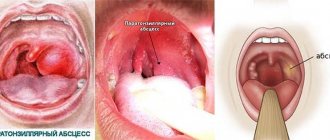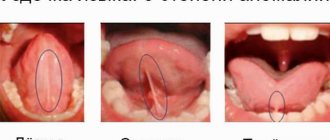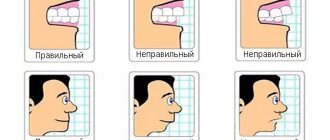Online speech therapy exercises
Speech therapy of vowels:
|
| | | | | | | | | Difficult vowels:
e;e;yu;ya |
e;u;e;y;a;o;e;ya;i;yu | Setting consonant sounds and letters:
|
| | | | | | | | | | | | | | | | | | | Difficult consonants:
b;p | w;w | z;s | g;k | s;ts | v;f | r;l | p;l | r;p;l | z;s;c | h;f;sh;sch;ts;x |
You can use all the speech therapy material provided on the site as a speech therapy aid! Use tongue twisters, riddles, retellings (teaching retelling), stories, fairy tales to develop speech. Online exercises are also the basis for successful learning at school. Try to perform speech therapy exercises correctly yourself, and then start working with your child. Correctional work with children involves overcoming speech and psychophysical disorders in children. Classes with an online speech therapist help improve fine motor skills. Individual lessons help solve diction problems in children.
thumb and index finger.,
Stretching the frenulum
Having placed a sterile scarf (napkin) on the tongue, place the index and middle fingers under the tongue, frenulum between the fingers, press the thumb on the front of the tongue and perform pulling movements of the tongue outward.
The index and middle fingers are motionless (see Fig. 1 and 2).
Exercise "Mole"
Reception N.G. Vodovozova [8]-
Use your index fingers and thumbs to pull your tongue down by the tip.
- There is a slide in the yard, -
Use your index fingers and thumbs to pull your tongue upward by the tip.
— There is a mink under the hill. –
With your index finger, forcefully stroke the hyoid frenulum from bottom to top, stretching it.
- In this hole
— The mole is guarding the mink.
Exercise with a rubber ring.
(F.Ya. Khoroshilkina [9])
Place a rubber ring (cut from a pipette) on the tip of your tongue. The child opens his mouth wide, pressing the ring with the tip of his tongue to the palate, then closes it. After mastering the exercise, repeat it 3 times a day, 10 times.
Article:
Even if the frenulum is shortened (less than 8 mm), it is better to stretch it than to operate.
This is supported by the fact that after the operation there will be a scar on the frenulum, which will also reduce its mobility. In addition, the operated child will be afraid to do articulation exercises for the hypoglossal ligament for a long time in order to avoid the previously experienced pain. The short frenulum of the tongue is stretched to the required length using special exercises. If it is very short, it may take quite some time to stretch it.
Normally, the length of the frenulum is 1.5 cm. If the frenulum is shortened, the movements of the tongue are limited. Consequently, the pronunciation of sounds that require raising the tongue upward is impaired.
Rules for making sounds with a short frenulum
- Sounds that require a noticeable upward movement of the tip of the tongue (r, w, g) are placed after the child’s hyoid ligament is fully stretched.
- Sounds (l, h, sch, th, d) can be started when the frenulum has not yet fully stretched, but there is already some upward movement of the tip of the tongue.
- A short frenulum does not interfere with the normal pronunciation of other sounds of the Russian language.
Rules for performing exercises
- When performing exercises, the mouth should be opened as wide as possible, but at the same time so that the child can reach the alveoli with the tip of the tongue.
- All movements should be performed slowly, with a smile, close to the limit of what is possible.
- It should be borne in mind that performing exercises is physically difficult for a child, the tongue may get tired, the hyoid ligament may hurt - give him rest.
Exercise "Painter"
Smile, open your mouth. Using the wide tip of your tongue, stroke the palate from the teeth to the throat. The lower jaw should not move.
It's time to paint the rooms.
A painter was hired.
We lower the jaw lower,
We help the painter.
Exercise "Horse"
Smile, open your mouth. Click the tip of your tongue like a horse clicking. The mouth is open, the tip of the tongue is not extended or pointed. Make sure that it does not tuck inward and that the lower jaw remains motionless.
We're riding, we're riding a horse along a smooth path. A neighbor invited us to visit for sweet pudding. We arrived at lunchtime, but the neighbor was not at home.
Exercise "Mushroom"
Smile, open your mouth. Suck your wide tongue to the roof of your mouth. This is the cap of the mushroom, and the hyoid ligament is the stalk. The tip of the tongue should not turn up, the lips should be in a smile. If the child is unable to suck his tongue, then he can click his tongue, as in the “Horse” exercise. Clicking trains the desired movement of the tongue.
I stand on a thin leg,
I stand on a smooth leg,
Under the brown hat
With velvet lining.
Exercise "Accordion"
Position the tongue as in the “Mushroom” exercise, lips in a smile. Without lifting your tongue, open and close your mouth.
I play the harmonica, I open my mouth wider, I press my tongue to the roof of my mouth, I move my jaw lower.
Exercise "Drum"
Smile, open your mouth. Repeatedly and clearly pronounce the sound D – D – D. When pronouncing this sound, the tongue rests on the upper teeth, do not close the mouth. Very often, when performing this exercise, the child closes his mouth. To prevent this from happening, you can hold a stick about 1 cm wide or the handle of a rectangular children's toothbrush between your teeth (the handle should not be thick, it should be straight, like a ruler).
We beat the drum hard
And all together we sing:
“D—d—d—d!”
Exercise "Swing"
Smile, open your mouth. On the count of “one-two”, alternately rest your tongue on the upper and lower teeth. The lower jaw is motionless.
I swing on a swing
Up and down, up and down.
I rise higher and higher, and then down.
Exercise “Reach your nose”
Smile, open your mouth. Raise the wide tip of the tongue towards the nose and lower it towards the upper lip. Make sure that the tongue does not narrow and that the lips and lower jaw are not mobile.
Our tongue is great,
Reaches to the nose...
Exercise "Football"
Close your mouth, press the tip of your tongue against one cheek, then the other, so that balls are inflated under the cheek.
Do you want to play?
We drive the ball into the goal.
Exercise "Kitten"
Put a little condensed milk, sour cream, jam on a saucer... and lick it off with your tongue like a kitten. You can lick the ice cream with your tongue.
We poured it into a bowl
Milk for pussy.
The cat laps -
The tongue flickers.
Exercise “Self-massage”
Do the mushroom exercise. The child rubs the frenulum himself with his thumb and forefinger.
Here is a fungus on a thin stalk -
You put it in the basket!
Exercise "Mole"
Use your index fingers and thumbs to pull your tongue down by the tip.
There is a slide in the yard.
Use your index fingers and thumbs to pull your tongue upward by the tip.
There is a mink under the hill.
With your index finger, forcefully stroke the hyoid frenulum from bottom to top, stretching it.
In this hole.
The mole is guarding the mink.
Symptoms of this disease
Sometimes shortening of the hyoid frenulum becomes obvious in the coming days after the birth of a newborn - problems arise during breastfeeding, and the baby has difficulty sucking. Later, the problem manifests itself as poor speech development, problems with the development of teeth and jaw. What exactly the violations will be depends on how pronounced the pathology is, how elastic the cord is, where and how it is attached, what is the length and flexibility of the free edge of the tongue.
During the period of breastfeeding, pathology makes itself felt in approximately 25% of children with a congenital anomaly. A newborn cannot latch onto the breast correctly, often loses the nipple, cries, and gets tired. Feeding a baby turns into a real challenge for the woman and the baby itself. The baby does not receive enough milk and slowly gains weight. A nursing mother may notice that the baby is trying to use his lips to feed and actively bites the nipple with his gums - this is how the baby tries to increase the flow of milk in ways available to him, unable to suck normally and create the necessary pressure for this.
For the youngest mother, such feedings often cause severe stress, fatigue, nervous breakdowns, and painful cracks form on the nipples. The lactation process itself may be disrupted, because most often the child does not drink as much milk as is needed to fully replenish it. Often in this case, unable to bear it, mothers transfer their children to artificial feeding, and the pathology can remain undiagnosed for some time.
We suggest you read: Plastic surgery of the frenulum of the lips and tongue in a child
A short frenulum affects speech in different ways. Most often, the child incorrectly articulates the sonorant “r”, “l”, hissing “ch”, “sch”, “zh”, “sh”, there may be difficulties with the pronunciation of sounds that require the so-called upper articulation “t”, “d” " Speech therapists in this case talk about mechanical dyslalia. The mechanical factor is precisely the short sublingual cord.
Less often, the pediatric dentist is the first to diagnose the pathology, to whom alarmed parents turn with complaints of an open bite, misalignment of the dentition, and complaints of frequent gingivitis, periodontitis, and inflammation in the oral cavity. Upon examination, the true cause is revealed. If in early childhood the problem was not discovered and was not eliminated, then in adolescence the child develops an individual anatomical feature - a V-shaped tip of the tongue; cases of frenulum tearing, drooling when speaking, night snoring and even apnea also become frequent. For teenagers who are very sensitive to the features of their appearance and speech, all this can cause a decrease in self-esteem, isolation, reluctance to build social contacts, speak publicly, and this can lead to a number of psychological and even psychiatric problems.
The main and main symptom of phimosis is a significant narrowing of the foreskin. The patient will begin to notice that exposing the head of the penis becomes more and more difficult each time, since this process will be accompanied by ruptures, pain, and bleeding. If the disease is advanced, problems with urination begin.
After all, the consequences of the disease can be very dangerous. Not only is there a huge risk of developing serious health problems, but there is also a high probability that a man will remain childless.
Treatment and correction
There are two types of treatment for congenital anomalies - surgical and conservative.
Surgical
The operation to cut the frenulum, which limits the movement of the tongue, is called frenulotomy. This is a fairly simple surgical procedure, similar to cutting the frenulum of the penis in boys. During the operation, which is performed under local anesthesia, the doctor cuts the lingual frenulum. In a newborn, this cord does not contain blood vessels or muscles, and the operation does not cause problems for anyone; it is easy and quick. In the first days after birth, if the short frenulum prevents the child from eating normally, a frenulotomy is performed with scissors and a transverse incision is made. It does not require stitches or anesthesia. The wound heals quite quickly.
If the problem became obvious after discharge from the maternity hospital, then frenulotomy is performed under local anesthesia - the doctor can cut the frenulum with scissors, a scalpel or a laser method. After the child turns 2-3 years old, if surgery is necessary at this age, some age-related nuances are taken into account. Blood vessels appear in the connective tissue. Starting at this age, if necessary, frenulotomy is performed in a hospital with anesthesia and suturing. There is laser frenulotomy or the so-called bloodless method. After it, recovery and healing occurs faster.
If the problem was not identified early, and the need for surgery appears after 5 years, then another operation is performed - frenuloplasty. This intervention cannot be called easy. It requires general anesthesia, suturing, and long-term inpatient monitoring of the patient. The essence of the operation comes down to the removal and excision of the old cord with the formation of a new one, fixing the new attachment site with sutures. Sometimes it is necessary to correct the dentition. It is quite difficult to trim, remove and create a normal bridle again. The rehabilitation period is even more difficult - without the help of a speech therapist, the baby’s speech will not become full by itself, even after the operation.
In what cases is surgical treatment recommended:
- if the child cannot eat fully;
- if the dentition shifts, an incorrect bite is formed;
- if speech is impaired and conservative methods are ineffective.
Special techniques will help to stretch the short ligament - stretching exercises, speech therapy gymnastics, massage. Children with a small frenulum benefit greatly from the articulation exercises “Horse”, “Mushroom”, “Accordion” and others. You can start classes with a speech therapist at 1 year of age. This should include daily exercises at home on your own and a visit to a speech therapist, who will help you understand whether the short ligament is bothering the child or whether he really needs the surgery itself.
If the functions of the tongue do not suffer, says Dr. Komarovsky, then is it worth having surgery? Until 2-3 years old, you can wait and watch, work with the child. If the problem is identified late, for example, at 4 years old, then there is no point in waiting - if the doctor recommends a prompt solution to the problem, you should agree. Situations where a child has torn a frenulum require mandatory consultation with a doctor. Conservative methods that allow you to stretch the hypoglossal ligament without surgery are considered effective for children under 5 years of age.
We invite you to read: How to treat frenulum rupture in men









